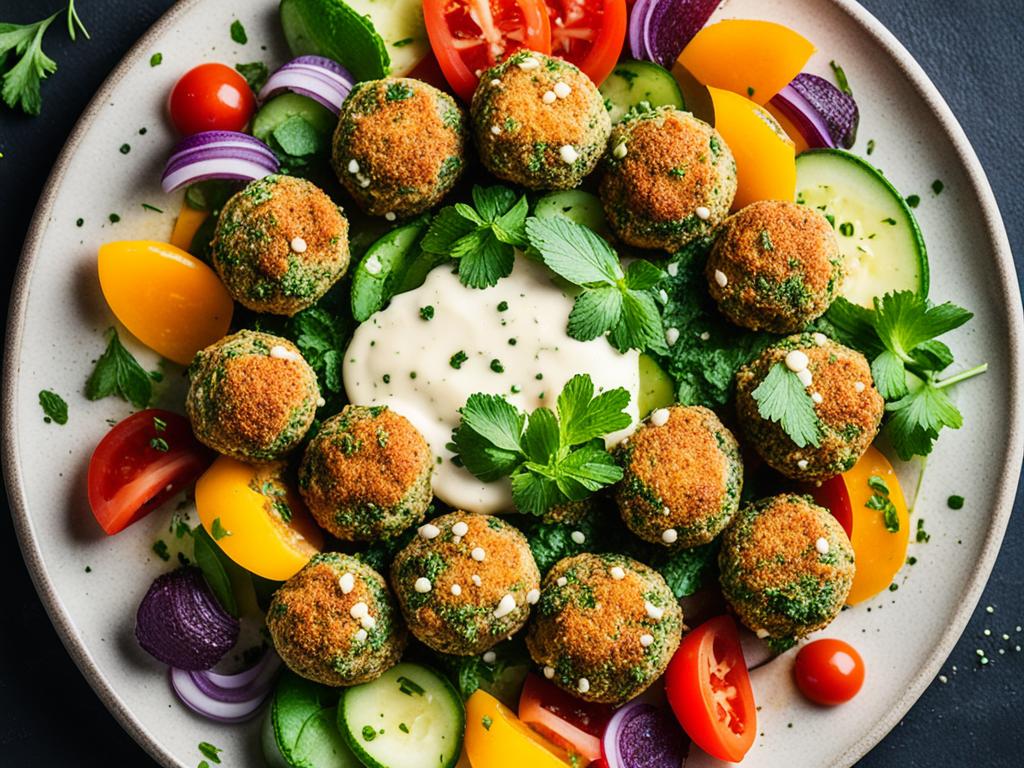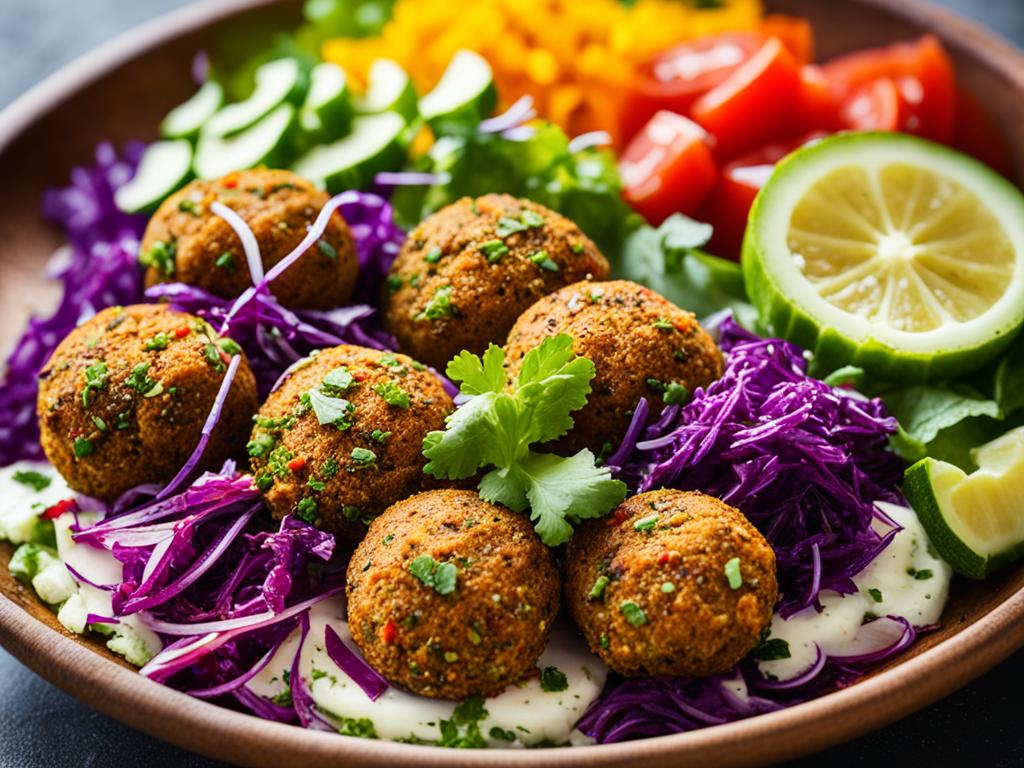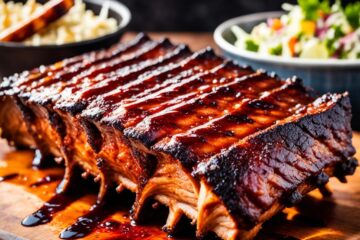Imagine walking down the lively streets of Beirut. The air is filled with the scent of crispy falafel. You see vendors in Cairo, turning chickpeas into golden-brown delights. This is the Middle East, where falafel is a key part of the food culture.
The first bite of fresh falafel is unforgettable. Its crunchy shell hides a soft, tasty center packed with spices and herbs. It can be a quick snack or a whole meal. People worldwide love falafel for its exciting taste.
In this post, we dive into the world of falafel. We uncover its Middle Eastern roots and learn to cook it at home. You’ll get tips for making it just right and advice on how to change it to your liking.
Key Takeaways:
- Falafel is a beloved dish that holds cultural significance in the Middle East.
- Its crispy exterior and flavorful interior make falafel a delight to savor.
- We will explore the origins of falafel and how it has evolved over time.
- You will learn how to make authentic falafel at home, with tips for achieving the perfect texture.
- Customization options and healthier alternatives for falafel will be shared.
The History and Significance of Falafel (Middle East)
Falafel has a long history and is key in Middle Eastern food. It started in Egypt many years ago. People are not sure exactly when, but it’s always been loved.
Falafel quickly became a favorite street food in Egypt and the Middle East. It’s made from chickpeas, herbs, and spices. This mix became a tasty and healthy meal for many.
Falafel’s fame spread to places like Lebanon, Israel, Palestine, and Jordan. Each area added its special touch to the dish over time.
“Falafel is not just food; it carries with it the stories of generations. It represents a culinary heritage and an important part of our cultural identity.”
– Mohammad Abbas, Middle Eastern food historian
Falafel became popular for its great taste and being meat-free. It was perfect for vegetarians or anyone wanting a plant-based meal. This made it a top choice for many people in the Middle East.
The Cultural Significance of Falafel
Falafel is more than just food. It brings Middle Eastern people together, whether at markets or family meals.
It’s loved worldwide now. People from all over enjoy it, making it a part of global cuisine.
Falafel’s Journey Continues
Falafel continues its journey from Egypt’s ancient streets to kitchens worldwide. It reminds us of the rich culinary history in the Middle East.
Mastering the Art of Making Authentic Falafel (Middle East)
Creating authentic falafel is about knowing the right techniques and ingredients. If you love vegetarian street food or want to dive into Mediterranean flavors, this recipe is perfect. It’s guaranteed to please your taste buds.
Start by soaking chickpeas overnight for the best chickpea fritters. This makes them soft enough to grind easily and ensures a creamy mix. Be sure to rinse them well after soaking.
Then, grind the chickpeas to a breadcrumb-like texture. Use a food processor for this, adding fresh herbs like parsley if you like.
Now, add spices that give falafel its amazing taste – like cumin and coriander. Feel free to tweak the mix to suit your taste buds.
After seasoning, shape the mixture into balls or flatten them for a twist. This step lets you choose between deep-frying or healthier options like baking or air-frying.
Customizing your falafel experience:
- For freshness, enjoy your falafel in warm pita with lettuce, tomatoes, and tahini sauce. It’s a tasty and balanced vegetarian meal.
- Looking for gluten-free? Try your falafel on quinoa or rice with veggies and tzatziki sauce on top.
- Want more protein? Add hummus or lentil salad. They boost nutrition and go well with falafel’s Mediterranean flavors.

Making authentic falafel sets the stage for many tasty, healthy meals. It’s great for crowds, Mediterranean parties, or personal culinary journeys. This recipe is versatile and full of flavor.
Falafel is cherished worldwide for its deep history, cultural meaning, and great taste. With this recipe, you can enjoy and enhance the Middle Eastern flavors. Explore healthy falafel options and make every bite memorable.
Conclusion
Falafel is more than just a dish. It’s a beloved food around the globe, connecting people to its rich culture. We’ve shared its deep roots, its spot in Middle Eastern meals, and tips for perfecting your own falafel at home.
Learning to make falafel means enjoying crispy yet tender bites seasoned with Mediterranean flavors. You can stick to the traditional street food or try a healthier version. Falafel is a yummy and healthy choice for everyone.
Falafel is also about sharing happiness. It sparks joy in gatherings. So, why not get your loved ones together, cook some falafel, and celebrate the simple pleasure of eating together?
For more on falafel and Middle Eastern food, check out the Falafel Index. It delves into how falafel affects the economy and what it says about buying power in the Middle East.




